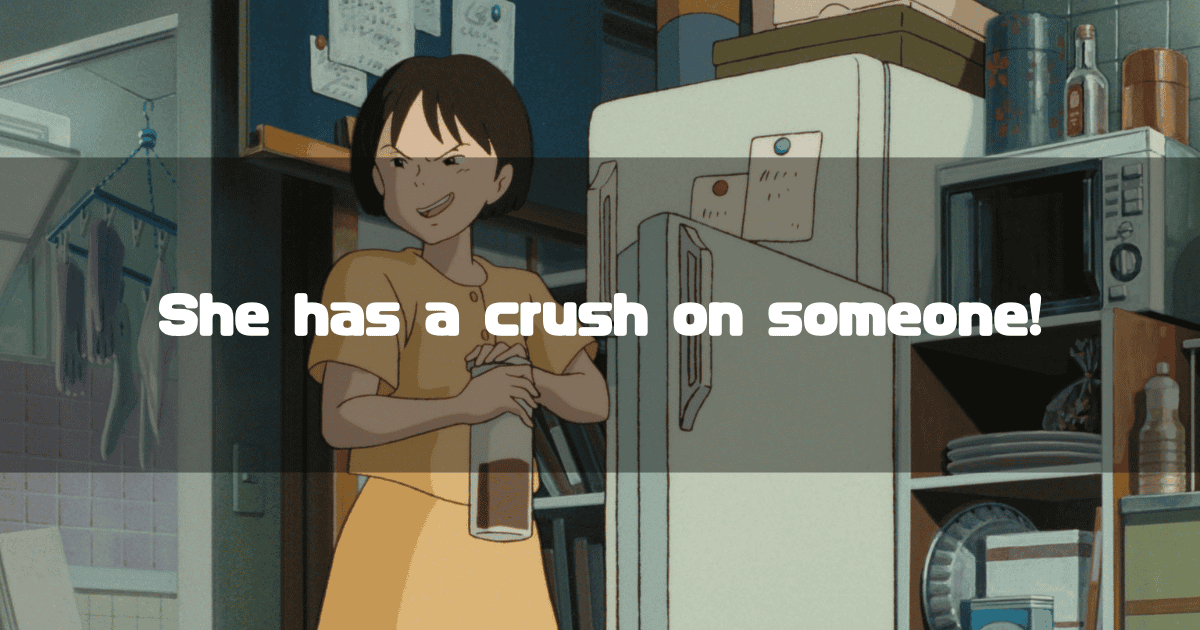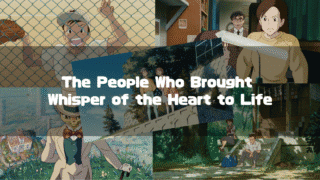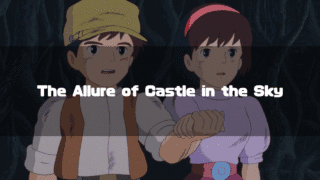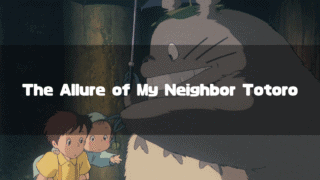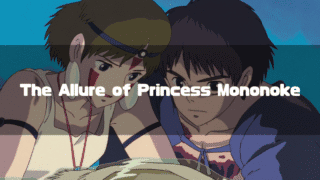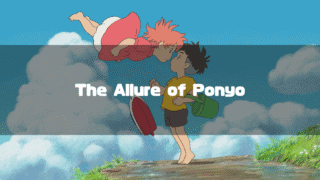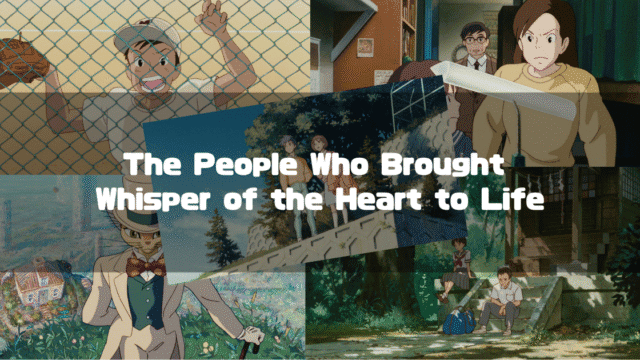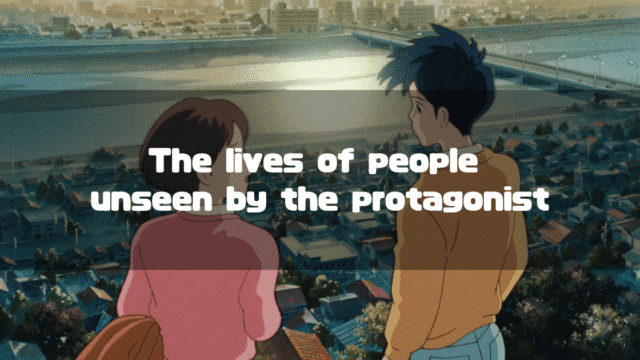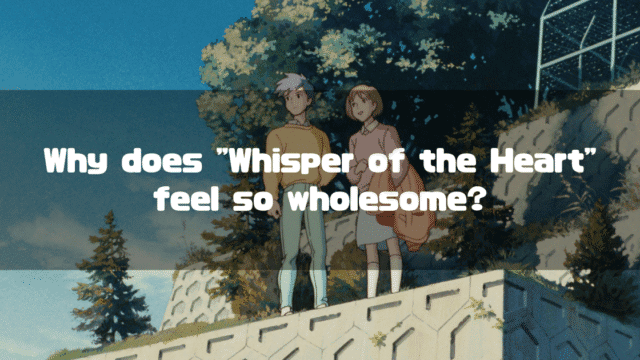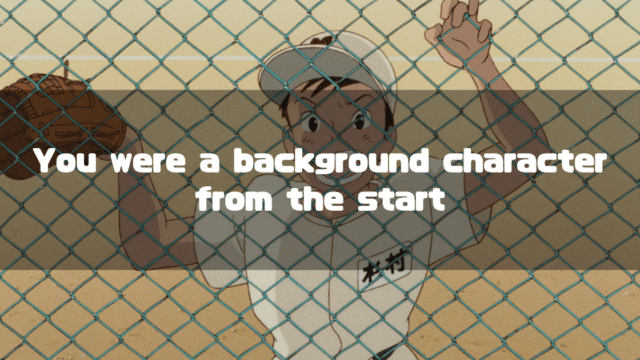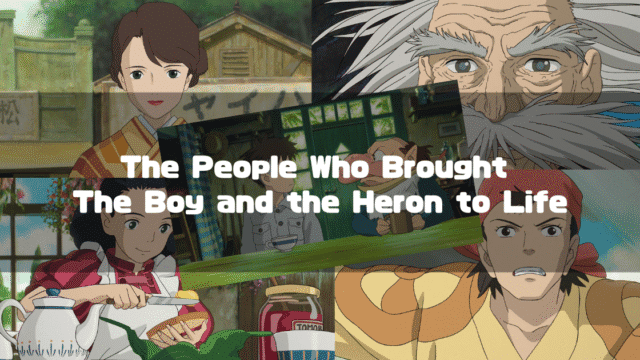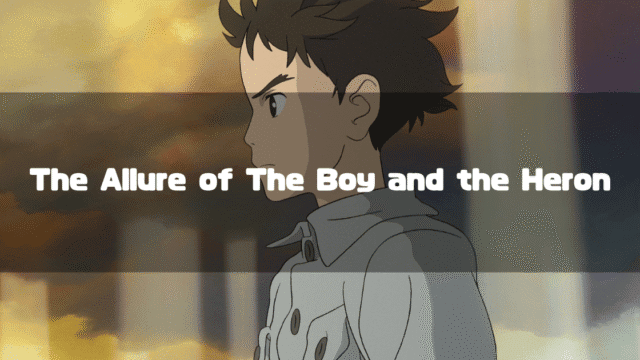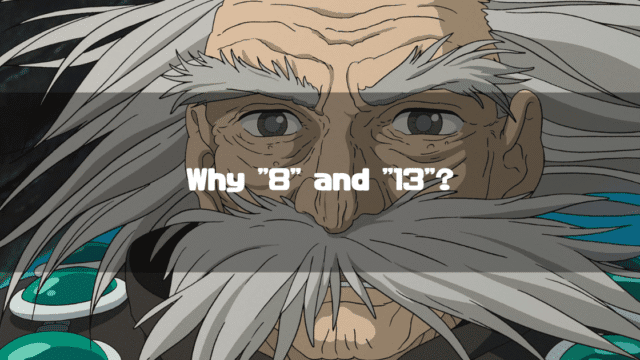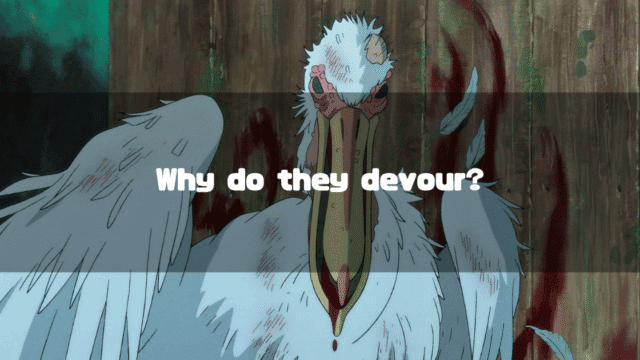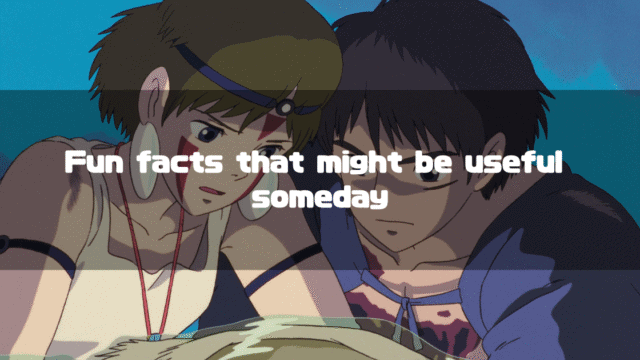Whisper of the Heart(Studio Ghibli Official) is a 1995 animated feature film directed by Yoshifumi Kondō.
Although Hayao Miyazaki was in charge of the screenplay and storyboards, this was the first Studio Ghibli theatrical film not directed by either Hayao Miyazaki or Isao Takahata. (Outside of theatrical releases, Ocean Waves, directed by Tomomi Mochizuki, was broadcast as a TV special in 1993). It was undoubtedly a work that was meant to usher in a new era for Studio Ghibli, but director Kondō passed away suddenly in 1998 at the age of 47.
This time, I’d like to summarize the plot and points for consideration for Whisper of the Heart. By the way, when I say summary, I mean I’m going to spoil everything, so if you don’t like spoilers, please read only partway through and then watch the movie.
*This article is an English translation of the original Japanese article, 「耳をすませば」のネタバレあらすじと考察ポイント-人物相関図付きでラストまで解説-.
Let an AI walk you through the highlights of this post in a simple, conversational style.
- Detailed Synopsis
A brief summary of the film would be: “Shizuku Tsukishima, a third-year junior high student, meets Seiji Amasawa through her love of reading and decides to pursue her own dream. The two encourage each other and promise their future together.” However, this article provides a more detailed synopsis, a character map and an explanation of the story. - Various Points for Consideration
We will explain points for consideration such as The Tragic Man Sugimura, Similarities Between Shizuku and Seiji, and The Endlessly Depicted Trains, and introduce more detailed articles (within this blog).
Whisper of the Heart (1995) Synopsis(Spoilers Ahead)

Quick Summary
A short summary of the key points of Whisper of the Heart would be as follows:
- Guided by a Library Card
The protagonist is a third-year junior high student, Shizuku Tsukishima. A book lover, Shizuku becomes intrigued by a person named Seiji Amasawa, whose name she finds on the library cards of the books she borrows. - A Chance Encounter at Chikyuya
Led by a mysterious cat, Shizuku arrives at an antique shop called “Chikyuya,” where she discovers that Seiji Amasawa is a boy in the same grade at her school. - Seiji’s Dream and a Premonition of Parting
Seiji dreams of becoming a violin maker. After a major argument with his parents, it is decided that he will go to Italy to apprentice with a violin maker, thanks to a connection from his grandfather, the owner of “Chikyuya.” - Starting to Write as a Personal Challenge
Strongly inspired by this, Shizuku secretly begins writing a novel as a “personal challenge.” Her declining grades reveal this to her parents, but she promises to return to her studies after finishing her “challenge” and continues to write. - The Novel’s Completion and a Milestone of Growth
Shizuku’s “personal challenge” comes to a close when she has Seiji’s grandfather read her completed novel. - A Promise for the Future and a Proposal
Before leaving for Italy, Seiji proposes to Shizuku, and she accepts.
Character Map
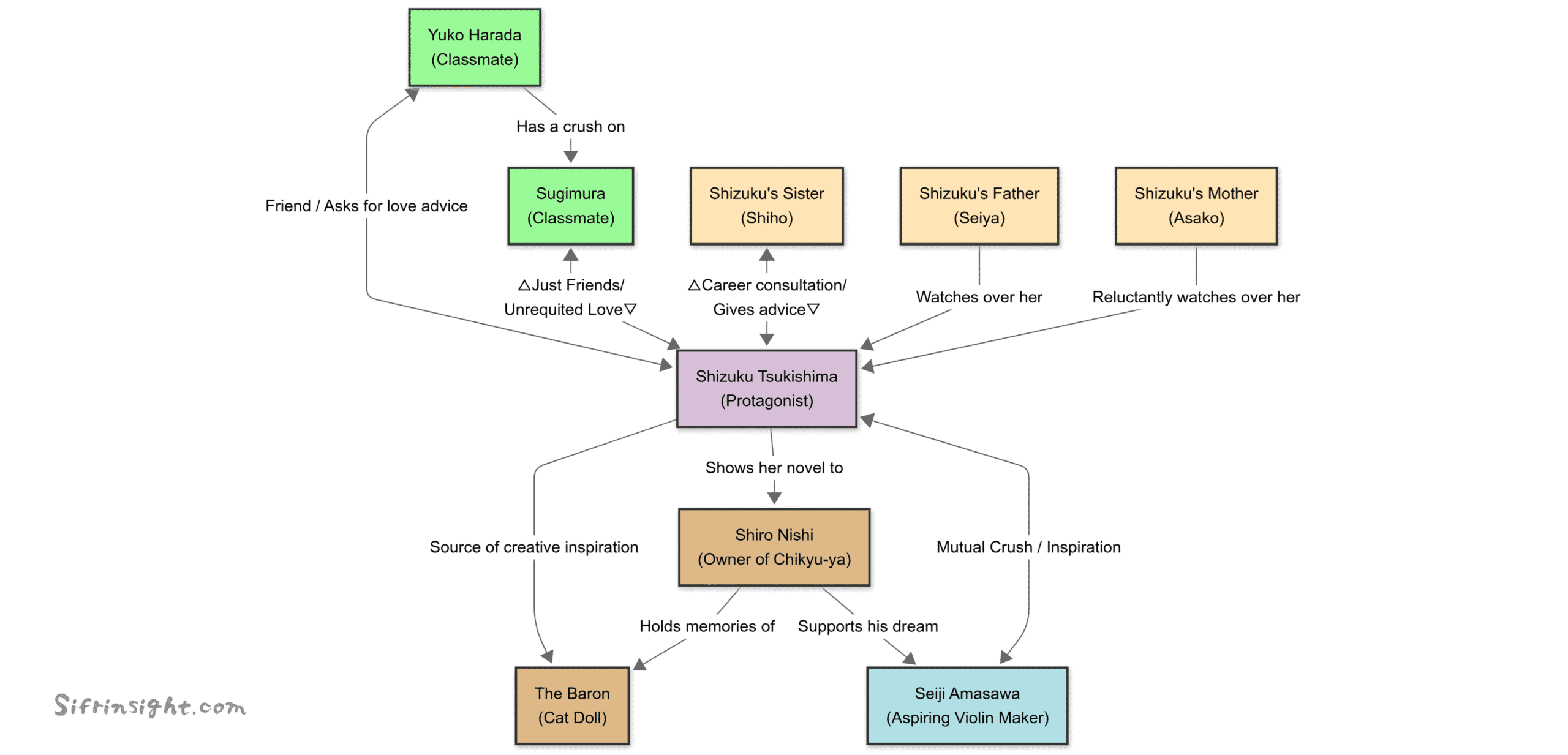
Story Explanation
Whisper of the Heart is a “story depicting the fresh romance of junior high school students,” but it also portrays the struggle of young people trying to break free from a “protected state” and forge their own path.
However, being junior high students, they cannot completely break free. The supportive spirit of the adults watching over Shizuku Tsukishima and Seiji Amasawa is depicted through Seiji’s grandfather and Shizuku’s parents.
From here, let’s take a closer look at the synopsis of Whisper of the Heart.
Shizuku Tsukishima and the Boy’s Encounter
The story’s protagonist is Shizuku Tsukishima, a third-year junior high student. As usual, she was reading a book she had borrowed from the city library. As she glanced at the library card, a certain name caught her eye.
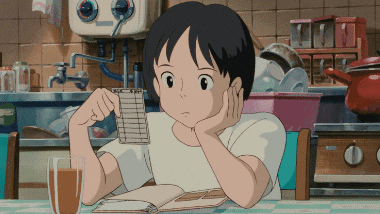
She immediately checked the cards of other books and found the name Seiji Amasawa on every single one. Shizuku wondered about this person who read as many books as she did. Who could Seiji Amasawa be?
The next day, having run out of books, Shizuku went to the school library. Although it was summer vacation, she asked a friendly school nurse to let her check out a book. The book was stamped with “Amasawa Collection.” Afterwards, Shizuku met up with her friend Yuko Harada and showed her the translated lyrics for Country Roads that Yuko had requested (for her choir club). Shizuku herself was not satisfied with the translation, but Yuko liked it. She had also prepared a slightly comical version about their hometown called Concrete Roads, which was also well-received.
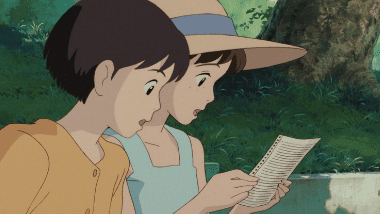
After talking about the lyrics, Yuko hesitantly asked Shizuku, “Is there anyone you like?” It seemed this was the real reason she had called Shizuku out. Yuko had received a love letter from a boy and was unsure how to respond. It appeared she liked someone else. Just then, their friend Sugimura called out from the sports ground.
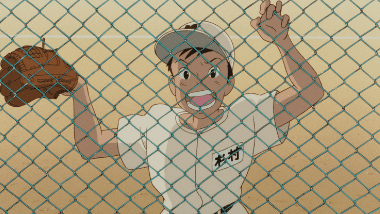
Sugimura had only asked Shizuku to get his baseball bag, but a blushing Yuko ran off. After tossing the bag over the fence to Sugimura, Shizuku hurried after Yuko. This incident made it clear that Yuko liked Sugimura, but the problem of the love letter remained. They talked about it on their way home, but Yuko was still undecided. At that moment, Shizuku realized she had left the book she had just borrowed on the bench and rushed back to school. When she got to the bench, a boy was engrossed in reading her book.
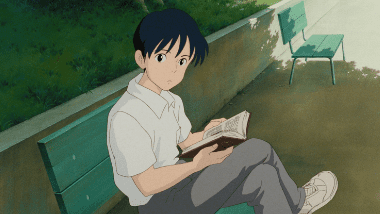
When she told him it was her book, he returned it obediently, but he seemed to know her name. As Shizuku wondered about this, he left her with the words, “Hey, I think you should drop the ‘Concrete Roads’ thing,” and walked away. He had also read her translated lyrics tucked inside the book. Because of this and his parting shot, Shizuku was in a bad mood for a while, thinking, “What a jerk!”
The next day, while taking the train to deliver lunch to her father at the library where he worked, she noticed a strange cat on the train.
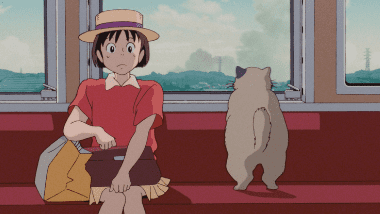
She tried talking to it, but got no response. However, when Shizuku got off at her stop, the cat got off too. Sensing a strange connection with the cat, which seemed to be heading towards the library, Shizuku decided to follow it. As she followed, observing its carefree movements, she came upon a curious shop called “Chikyuya.”
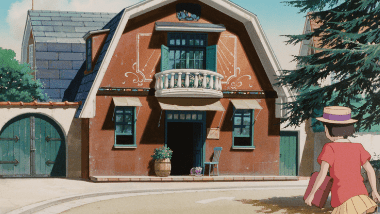
It looked like a Western antique shop, and Shizuku was drawn inside by a cat doll displayed there. She observed the doll, imagining the fantasy that the cat she had been following was this very doll.
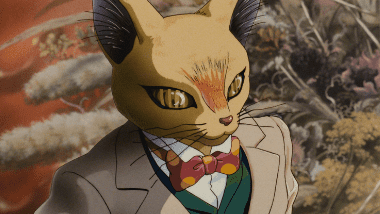
Then, the shopkeeper appeared. According to him, the cat was a baron with the very distinguished name of Humbert von Gikkingen. Shizuku stayed in the shop for a while longer, but then remembered she had to deliver lunch to her father and rushed out of Chikyuya to the library.
As she neared the library, someone called out from behind her. She turned to see the jerk on a bicycle. He had brought her father’s lunch, which she had forgotten at Chikyuya. When she asked why he had brought it, the boy just dodged the question and wouldn’t answer. To make matters worse, he teased her again, saying, “Your bento box is huge!” Shizuku became grumpy again.
After delivering the lunch to her father at the library, she read for a while and found the name Seiji Amasawa on another library card. As she wondered what kind of person he was, the face of the jerk inexplicably came to mind.
The Identity of Seiji Amasawa and His Way of Life
Summer vacation ended, and Shizuku was in the middle of exams. During a lunch break between tests, Shizuku asked a teacher about the name “Amasawa,” the donor of the book she had borrowed during the summer. She learned it was Koichi Amasawa, a former PTA president. Slightly disappointed that it wasn’t the Seiji Amasawa she had hoped for, she was then told that Koichi Amasawa’s youngest son was in her grade. Surprised by this fact, Shizuku hurriedly left the staff room.
Just then, the jerk appeared, heading to the staff room with a teacher. He must have noticed her, but he acted as if he didn’t see her at all. In retaliation, Shizuku also pretended not to know him and passed by the jerk.
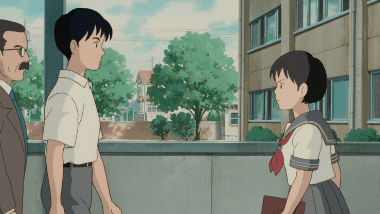
Whether this small act of rebellion had any meaning is unknown, but Yuko, who had witnessed the whole thing, shared the information with their friends during lunch.
That night, Yuko called. When they met at a nearby park, Yuko told her that Sugimura had relayed a message asking for a reply to the love letter she had received. Having been told such a thing by the person she liked, Yuko was deeply hurt and told Shizuku she would be absent from school the next day.
The next day, Shizuku called Sugimura to a shrine. There, she confronted him, but Sugimura couldn’t understand why Yuko was hurt. Seeing Sugimura like this, Shizuku ended up telling him that Yuko had feelings for him.
Sugimura was confused by this fact, but when Shizuku told him he should be clear about his feelings, Sugimura confessed, “I like you, Tsukishima.” Now it was Shizuku’s turn to be confused by Sugimura’s unexpected words. Sugimura tried to stop Shizuku as she tried to leave, but with her reply, “I only think of you as a friend,” Sugimura realized that one love had come to an end.
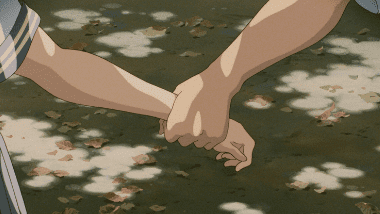
She had blamed Sugimura for being “insensitive” for not noticing Yuko’s feelings, but Shizuku realized that she herself had not noticed Sugimura’s feelings, and she blamed herself for it. Her feet then led her, strangely, to Chikyuya. Unfortunately, the shop was closed that day, but as she was moping in front of the store, the jerk appeared.
When Shizuku said she wanted to see the cat baron, the jerk invited her into Chikyuya. According to him, the cat baron was a very precious item that the shopkeeper was deeply attached to. Telling Shizuku she could “stay for a while,” the jerk headed down to the workshop below.
After spending a considerable amount of time with the cat baron, Shizuku headed to the workshop. There, she saw a man desperately making a violin.
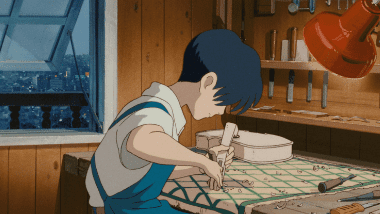
It seemed he could also play the violin, so Shizuku begged him to play for her. The jerk agreed on the condition that Shizuku would sing, and he played Country Roads. As they performed, the owner of Chikyuya and his friends arrived and joined in the performance.
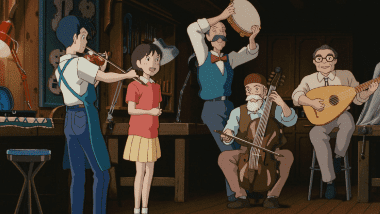
After the performance ended, Shizuku greeted the shopkeeper and his friends, but then she learned a shocking truth. The jerk who had been playing the violin was none other than Seiji Amasawa himself. Shizuku felt a mix of confusion, surprise, and joy at this revelation, but the time she spent at Chikyuya became very precious to her.
On the way home with Seiji, Shizuku learned of his grand dream. After graduating from junior high, Seiji planned to go to Italy to become a violin maker. Of course, his whole family was against it, but his grandfather, the owner of Chikyuya, was his only supporter. Shizuku, who had never seriously thought about her own future, felt the sting of her own immaturity in the face of Seiji’s determination.
The next day, Seiji visited Shizuku’s classroom. It seemed he had something to tell her, but Shizuku immediately led him to the rooftop. There, Seiji told her that his father had finally relented and agreed to his study abroad, with conditions. First, he would spend two months training at a workshop through his grandfather’s connections to see if he had talent. As if to celebrate Seiji’s new beginning, the rainy sky began to clear, revealing its blue.
Seiji’s confession didn’t stop there. He had known about Shizuku for a long time, and had worked hard to read books just so he could write his name on the library cards before her. And that even in Italy, he would live his life to the fullest, thinking of her.
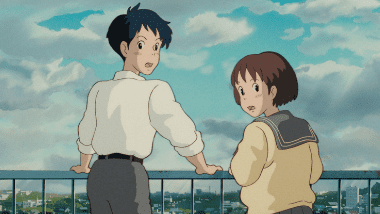
While feeling joy at Seiji’s confession, a complex mix of emotions—sadness at their parting, her own inadequacy—rushed through Shizuku. Having never seriously confronted her own path and future, Shizuku made a certain decision after hearing Seiji’s news.
Shizuku’s Challenge and Her Promise with Seiji
While Seiji was testing himself in Italy, Shizuku decided to test herself as well. Her challenge was to “write a novel.”
Shizuku decided to write a story with the cat baron, who had long fascinated her, as the protagonist. To get “permission,” she visited Chikyuya and received it on the condition that the shopkeeper would be her “first reader.” Despite facing high school entrance exams, Shizuku devoted herself to writing her novel, whether at home or at school.
One evening, Shizuku had a discussion with her family about her future. Her grades, which she had been neglecting in favor of writing, had been steadily dropping, and her mother had been called to the school about it.

Both her mother and sister were worried about her academic performance, but her father accepted her words that she was “spending time on something important to test myself.” It might have been part of his coping mechanism for living in a female-dominated household, but Shizuku made a promise to her parents that she would “return to being a student preparing for exams after this period of testing myself is over,” and went back to writing her novel.
The novel she worked so hard on under these circumstances was finally completed. As promised, she showed it to the owner of Chikyuya. The owner had wanted to read it slowly, but at Shizuku’s pleading, he agreed to read it all at once.
The shopkeeper’s review of Shizuku’s novel was positive, but Shizuku knew well that it was a “lie.” No one was more aware of the low quality of her novel than Shizuku herself.
But to such a Shizuku, the shopkeeper said, “That imperfection is what’s beautiful.” That imperfection was the same as Seiji’s, and that imperfection itself had value. Shizuku shed tears at the shopkeeper’s words, telling her to take her time polishing herself, a gem still in the rough.
Afterwards, the two ate nabeyaki udon that the shopkeeper had made. He told her that when Seiji first finished making a violin, he had made him a large bowl of ramen.
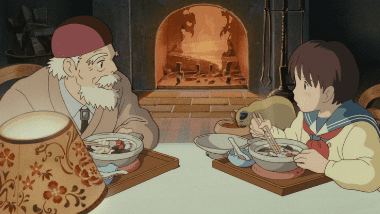
Having finished her “period of testing herself,” Shizuku returned to being a student preparing for exams. One morning, she woke up early and looked out the window. There stood Seiji, who was supposed to still be in Italy. He had returned a day early on his flight. He must have wanted to see Shizuku as soon as possible.
Seiji told Shizuku he had something to show her and invited her out into the early morning town. What Seiji wanted to show her was a beautiful sunrise that could be seen from a “secret place.”
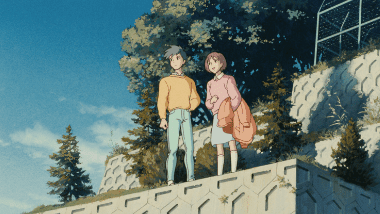
In front of that beautiful sunrise, Seiji proposed to Shizuku, “Let’s get married!” When she accepted, Seiji hugged her tightly, exclaiming, “I love you!”
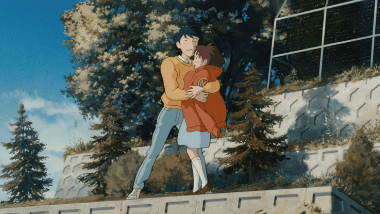
Unaware of the two of them, people go about their same, precious daily lives.
The above is my personal summary of Whisper of the Heart. A summary is just a summary, so if you haven’t seen it yet, I urge you to watch Yoshifumi Kondō’s Whisper of the Heart at least once.
Next are my thoughts on the points for consideration in Whisper of the Heart.
Whisper of the Heart (1995) Points for Analysis
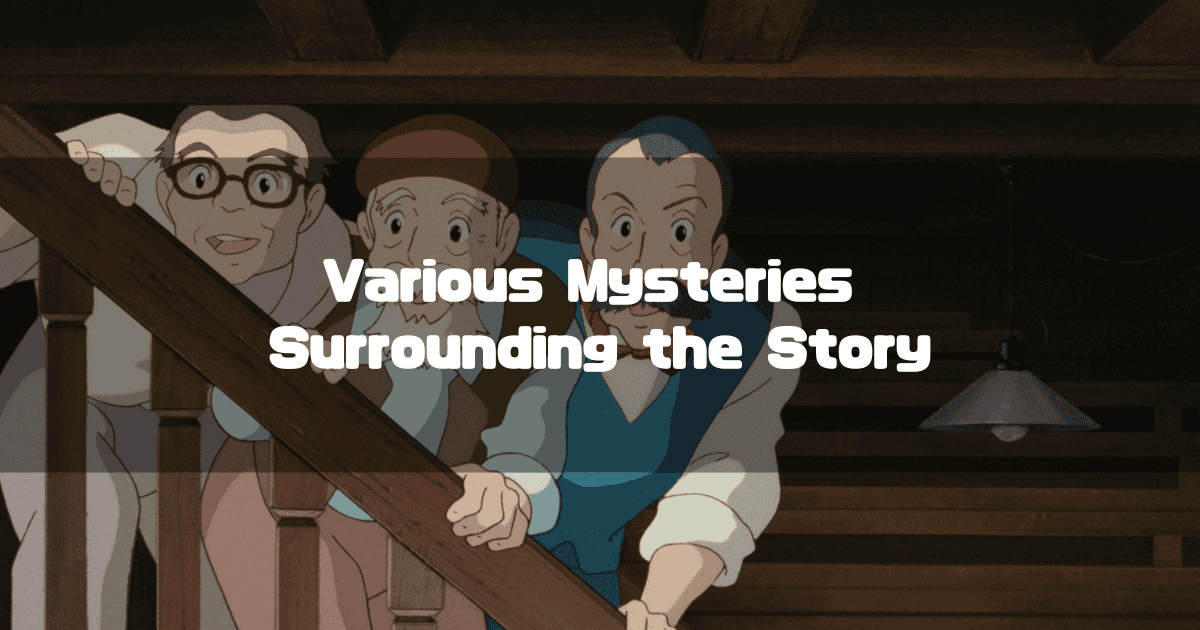
The Tragic Man Sugimura
Whisper of the Heart is a story about the romance between the protagonist Shizuku Tsukishima and Seiji Amasawa, but in its shadow, a man named Sugimura is magnificently defeated. Because Seiji Amasawa is so splendid, one can’t help but root for Sugimura, but this man Sugimura is also a key figure who relates to the very core of the work Whisper of the Heart. I have summarized this in the following article.
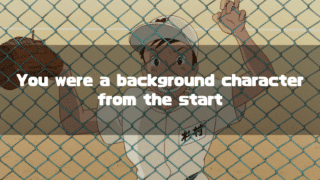
The most important point is that when Sugimura first appears, he is wearing a glove on his right hand. Anyone who knows baseball would know that a player with number 5 on his back should normally wear a glove on his left hand. Usually, right-handed people wear a glove on their left hand and left-handed people on their right, so they can throw the ball with their dominant arm. Infielders need to be able to throw to first base instantly, so they are usually right-handed (baseball is an extremely “asymmetrical” sport in this way).
So, why was Sugimura wearing a glove on his right hand? Of course, one could dismiss it as a mistake on Ghibli’s part, but that’s no fun. Please compare my thoughts in the article above with your own ideas.
Similarities Between Shizuku Tsukishima and Seiji Amasawa
I think there are various reactions to the romance between Shizuku Tsukishima and Seiji Amasawa depicted in Whisper of the Heart, such as empathy or aversion, but it might also be interesting to think about the similarities between the two in this work. I have summarized that in the following article. Why do we feel a sense of refreshment from their figures, who burned their young lives so earnestly, sometimes clashing with their parents?
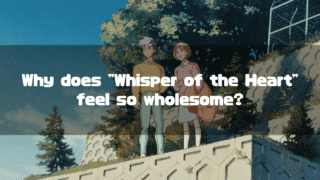
In the article above, as a bonus, I also wrote about the movie poster and Seiji Amasawa’s grandfather. Shizuku had Seiji’s grandfather read the first novel she ever wrote. Afterwards, that old man tells a love story that is strikingly similar to the novel Shizuku wrote. Everyone, do you think that old man’s story was true? There’s no evidence for either side, so it can’t be debated, but in the end, it comes down to whether you want to believe it was true or not. My thoughts are written in the “Appendix” of the article above. Please compare them with your own.
The Endlessly Depicted Trains and the Ending Animation
A notable visual feature of Whisper of the Heart is the “train” that appears over and over again. It appears from the opening, and trains are depicted at every turn. Why is that?
It seems to be connected to the ending animation. Why is the ending of Whisper of the Heart, a story of junior high school love, a “scene of people walking”?
Various reasons can be considered, and there is no single answer, but it’s also interesting to ponder the “why” of such visual expressions. My personal thoughts on this matter are summarized in the following article.
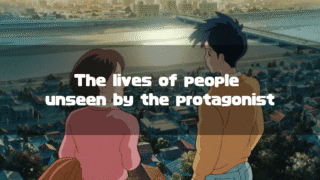
Appendix: The Big Fight Over the Country Roads Lyrics
An indispensable element of Whisper of the Heart is Country Roads. The song, with Yoko Honna’s impressive vocals, is originally Take Me Home, Country Roads, released by John Denver in 1971. Therefore, someone must have been in charge of the Japanese translation, and that person was Mamiko Suzuki, the daughter of producer Toshio Suzuki.
Personally, I think it was a brilliant translation, but apparently, she wrote those lyrics in about five minutes on the night of the deadline. This little boast is written in Ghibli Textbook 9: Whisper of the Heart (ジブリの教科書9:耳をすませば, in Japanese). Even Toshio Suzuki wants to brag about his daughter, huh.
Now, about those Country Roads lyrics, they were actually slightly modified by Hayao Miyazaki. A conflict arose between director Kondō and Hayao Miyazaki over this modification.
The Japanese translation of Country Roads has the following lyrics:
ひとりぼっちおそれずに生きようと夢見てた
(Direct re-translation)
I dreamed of living without fear of being alone
However, this lyrics were originally:
ひとりで生きると何も持たずに町を飛び出した
(Direct re-translation)
I left town with nothing, determined to live alone
Director Kondō, a native of Niigata, had left his hometown with practically nothing to build a career as an animator. The original lyrics perfectly matched director Kondō’s feeling that he couldn’t return to his hometown until he had accomplished something big. One can only imagine what director Kondō felt when he saw these lyrics.
On the other hand, Miyazaki’s judgment was that it was “too blunt.”
The original song’s lyrics are about “longing for one’s hometown,” but Ms. Mamiko digested that within herself and crystallized it as a “story of a person who left their hometown to grasp something” (amazing, right?). Hayao Miyazaki himself was satisfied with that, but he thought to soften it a bit. However, director Kondō strongly pushed for the original lyrics, and it eventually escalated into a shouting match.
Considering the facts, it seems director Kondō eventually gave in.
However, despite the shouting match, director Kondō was deeply grateful to Hayao Miyazaki and Toshio Suzuki for the opportunity to direct Whisper of the Heart. He was finally able to return to the hometown he couldn’t go back to without achieving something, with a banner of success.
When the ending theme plays, perhaps we should think about the feelings of director Kondō, who left his hometown saying, “I can’t go back.” When I hear that song, tears come to my eyes.
Shouldn’t we, who know these facts, listen to those lyrics by mentally converting them to “I left town with nothing, determined to live alone”?
The images used in this article are from “Studio Ghibli Works Still Images“.
About the Author
Recent Posts
- 2025-10-21
Indiana Jones and the Dial of Destiny(2023): Full Synopsis & Analysis: Indy’s True Motive and the Enigma of Helena - 2025-10-15
Indiana Jones and the Dial of Destiny(2023):Historical Background-WWII, the Real Dr. Schmidt, the Siege of Syracuse, and the Antikythera Mechanism - 2025-10-08
Why Does Children Who Chase Lost Voices Feel So Ghibli-esque? [Makoto Shinkai’s “Tale of Farewell”] - 2025-10-07
5 Centimeters per Second: Characters, Voice Actors, Character Analysis and Character Map - 2025-10-06
5 Centimeters per Second: Full Synopsis, Analysis, Ending Explained & Character Map (Spoilers)

